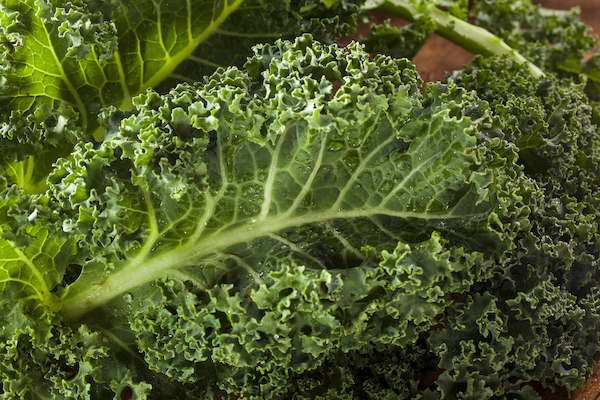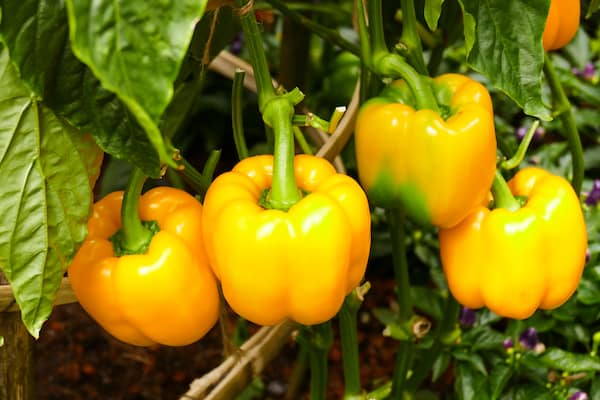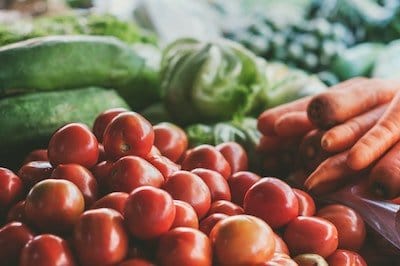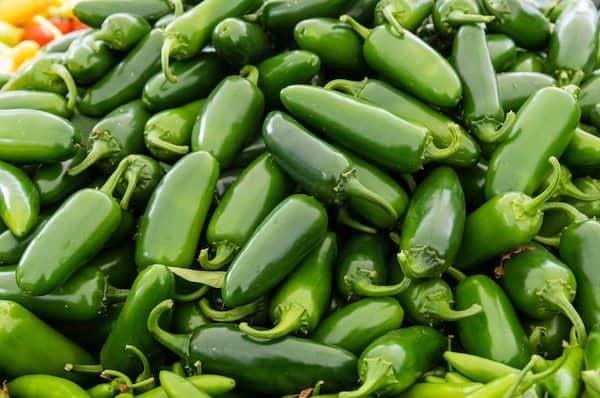How to grow edamame
A step-by-step guide to growing soybeans in pots
If you’ve ever eaten in a Japanese restaurant, there’s a good chance you’ve had edamame beans. These salty, nutty treats are so addictive … If you love them as much as I do, you’ll want to learn how to grow edamame in containers so you can have your own fresh supply right outside the door!
Like many other legumes, edamame (ed-uh-MAH-may) really is easy to grow, and it does amazingly well in container gardens.
If you’re wondering wait … what is edamame??
It’s the immature pod of the soybean plant!
Not only is it an easy-to-grow snack, edamame is highly nutritious. The benefits of soybeans include high protein, high fiber and lots of vitamins, including calcium, folate, magnesium, potassium and more. Soybeans contain all nine essential amino acids, forming a complete protein.
With everything going for it, it makes sense that soybeans are a staple food all over the world. It’s a great addition to a home garden, including in containers on your patio or deck.
If you want to know how to grow edamame in pots and harvest your own edamame pods … read on!
This post may contain affiliate links. If you buy something through these links, we may earn a small commission at no cost to you.
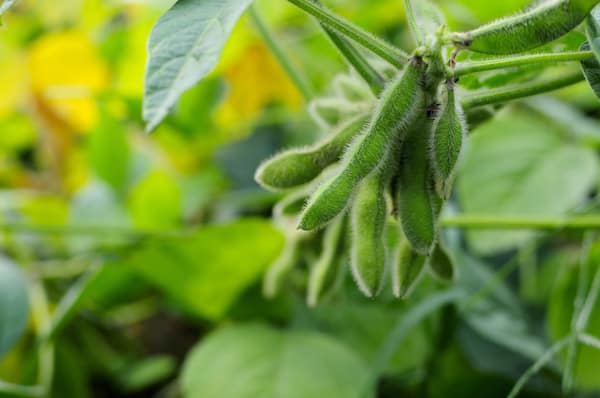
What is edamame?
Edamame is another name for the immature pod of the soybean plant. The soft beans inside the fuzzy pods are edible (and delicious!). They’re usually eaten steamed or blanched, lightly salted. You can pop the beans out of the pod right into your mouth. If you’ve never had edamame before, it probably sounds weird … but it’s SO GOOD.
Edamame is the Japanese word for “stem beans.” The first recorded use of the word dates back to 1275, and soybeans were first grown in China 7000 years ago.
When mature, the pods get hard and start to dry out. Mature, dry beans are what’s used to make soy milk, soy flour, soy sauce, tofu, tempeh and many other soy-based foods and products.
Soybeans are a legume originally native to East Asia but now also grown in North and South America. The soybean plant is a bushy, frost-sensitive annual that grows anywhere from 12-36 inches tall.
Much like other bush bean varieties, soybeans generally do not require staking.
How to grow edamame from seed
Edamame is easy to plant from seed. In fact, it’s sensitive to root disruption, so it does best when planted from seed outdoors, directly into the container where it will stay for the season.
After temperatures consistently reach above 65 degrees, sow seeds 1 inch deep, with 2 seeds every 4-6 inches.
If you are planting directly in your container to be used for the season (vs a seed-starting container), be sure to use high-quality potting soil.
Good potting soil is crucial to the health and success of container plants, as they have limited access to nutrients and water. My recommendations:
Overall best option: Miracle Gro Potting Mix – I’ve tested a number of potting soil options and always return to this standby.
Best organic option: Fox Farm Ocean Forest Potting Mix
(See below for container recommendations.)
Germination takes about 10 days.
When seedlings reach 3-4 inches tall, thin down to 1 seedling every 6 inches.
When thinning, it’s tempting to pull the little seedlings out of the potting soil, but it’s always better to snip at the surface level so you don’t disturb roots, which might be intertwined with roots from the stronger seedlings.
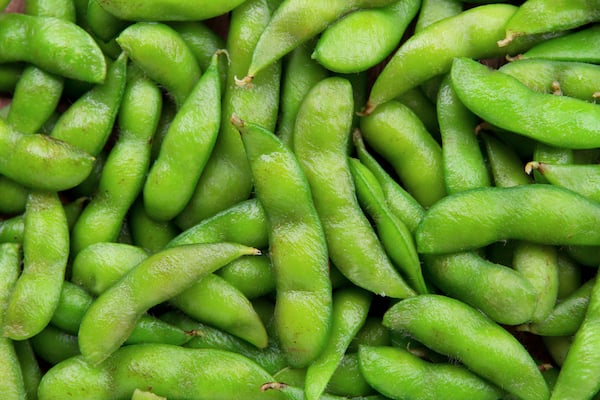
When to plant edamame
Soybeans are not frost tolerant, so it’s important to wait at least 2-3 weeks after your area’s last expected frost date. (Zones with warm winters can plant sooner.) Soil temperature should be at least 65 degrees, although 70 degrees and up is better.
In general, plan for late spring planting with a late summer harvest.
Most edamame varieties produce one big harvest all at once, so to have an ongoing supply, it’s best to succession plant every 1-2 weeks.
If you are going to succession plant, it’s important to remember that high heat (like over 90 degrees) will inhibit pod growth. So if your area has a major heat wave or very high average summer temps, you might want to hold off on a round or two until the heat lets up a bit.
Best varieties of edamame for containers
Most varieties can thrive in pots! I always recommend seeds from Botanical Interests, a high-quality seed company that specializes in organic and heirloom varieties (at reasonable prices).
Their recommended soybean variety:
Best containers for growing edamame
Like bush beans, lima beans, and other bush varieties, edamame doesn’t need a lot of room to grow. That’s a big reason it does so well in container gardens.
That means you have a lot of flexibility in container choice, depending on how much you want to grow.
Personally, I recommend using a large fabric grow bag and planting several, then succession plant every 10 days. I think that’s the most compact, easiest way to get a plentiful supply.
My favorite grow bags are the VIVOSUN brand. I personally use them for everything from peas and beans to pumpkins, squash, cucumbers, and greens like kale and spinach.
They’re versatile, reusable, and my plants LOVE them. They also come in a range of sizes to accommodate just about any size plant.
5-gallon size: 2 edamame plants
10-gallon size: 3-4 edamame plants
20-gallon size: 5-6 edamame plants
I recommend using one 20-gallon fabric grow bag and succession plant two at a time, or use two 10-gallon fabric containers and succession plant as space allows.
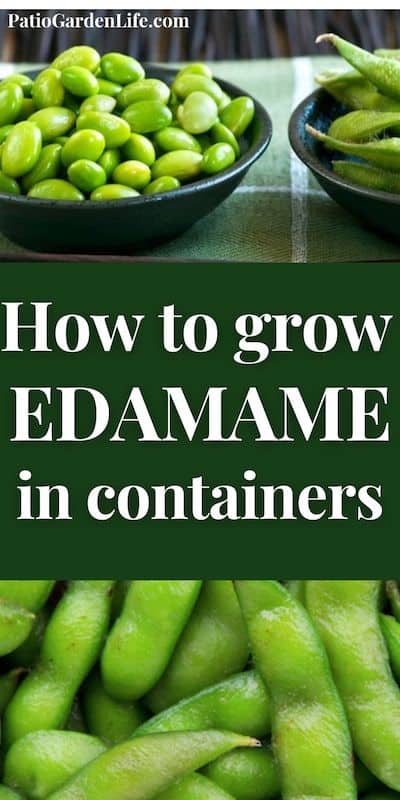
How to take care of edamame in a container
Edamame is easy to grow and relatively low-maintenance.
For best results, make sure it’s in a spot that gets full sun, at least 6 hours per day. Soybeans can tolerate partial shade but as a warm-season crop, they prefer lots of sun.
Watering instructions
Keep edamame consistently watered. Don’t let the soil dry out more than 1 inch from the surface; regular watering is the best way to support the overall health and hydration of the plant.
Always be sure your container has adequate drainage to prevent root rot: two holes drilled into the bottom of the pot, if you aren’t using fabric growing containers.
Fertilizer instructions
Like other legumes, soybeans fix nitrogen in the soil. So you don’t need to fertilize much and shouldn’t use nitrogen-heavy fertilizer if you do.
Too much nitrogen encourages heavy foliage growth, at the expense of a strong root system and pod production.
You can add a time-release fertilizer (my favorite is Jobe’s Organics Slow-Release Plant Food) or some organic matter to the potting soil when you plant, for an additional slow-release nutrient boost.
Just make sure the organic matter is aged compost, not green plant waste; anything green adds nitrogen.
(Learn more about soil nutrients in my Fertilizer 101 post!)
How long does it take to grow edamame?
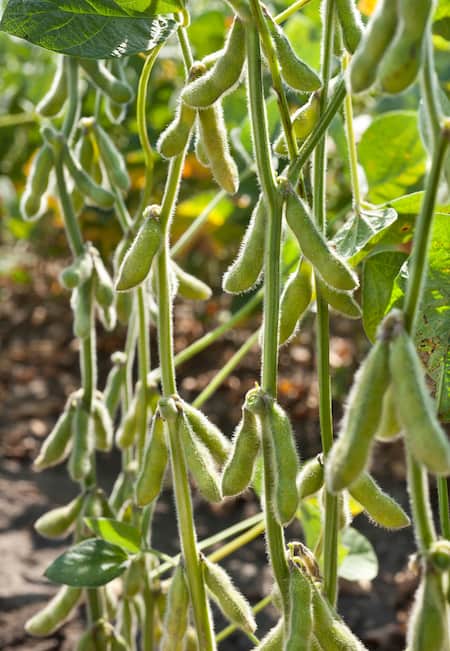
Soybeans have a fairly long growing period to maturity, about 12-14 weeks (85-100 days), sometimes longer.
That puts harvest sometime late summer or early fall, depending on variety and when you plant. Be sure to check seed packets and growing instructions so you know what to expect.
Edamame companion plants
Like other legumes, edamame does well with corn, squash, celery, cucumbers and potatoes.
Marigolds are good companion plants for anything in a container garden, as their scent repels pests and animals.
Strawberries are another good friend for soybean plants.
Plants to avoid placing near edamame: onions and garlic, which can influence flavor.
When to harvest edamame
Pods are ready for harvest when they’re bright green and the beans inside feel firm. At this point, the pods for most varieties will be about 2-3 inches long.
To harvest, carefully snap the pods off the plant at the stem. Or even better, use small, sharp garden shears to prevent tearing and damage. (I like the high-quality, affordable garden shears from Fiskars. If you sew like I do, you know they’re the experts in scissors and shears!)
You can also harvest the whole plant, since soybeans produce most of their pods all at once and you’re likely to get all or most of the soybean pods at once. Cut the entire plant down with garden shears at the soil surface level.
Refrigerate fresh edamame or blanch before freezing.
How to cook edamame
We make edamame in our house all the time, like sometimes more than once/week. We love it steamed and salted, which is so easy. I buy bags of frozen edamame (it’s with all the other frozen veggies at the grocery store) and steam in salted water. You can use a steam basket or a small amount of water in an uncovered saucepan.
Sometimes when we’re in a hurry or feeling lazy, I get the steam-in-bag kind and throw it in the microwave for 3.5-4 minutes.
Once cooked, sprinkle with kosher salt and shake in the bowl to spread it around. Or toss in a mixture of soy sauce, crushed ginger, a dash of dried garlic powder and a squeeze of lime juice.
Be sure to put out an extra bowl for discarded pods … there will be many!
Here are some recipes for more ideas:
- 9 Edamame Recipes (including how to steam, boil, microwave and stir fry)
If you started reading this article wondering … what is edamame? … and you’re still reading, that’s a sign you should try growing your own in a container!
More ideas for container garden inspiration:
- How to hand pollinate vegetables
- Weird home remedies for container gardens
- How to attract pollinators to your container garden
- How to attract dragonflies to your container garden
- Compost 101
- Potting Soil 101
- Small compost bins for container gardens
- Best edible flowers for container gardens
- Dirty Dozen foods you can grow in containers

